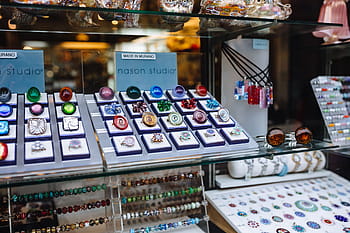An Analysis of 17th-Century European Minting Practices
페이지 정보
작성자 Bonny 작성일 25-11-06 23:59 조회 4 댓글 0본문

During the 1600s, European coinage mirrored the geopolitical transformations and financial evolution unfolding across the continent. Although every sovereign state and duchy maintained localized production methods, widespread conventions emerged in iconography, alloy standards, and trade mobility, revealing local variances alongside pan-European currents.
The period was defined by the persistent supremacy of precious metal denominations, with copper-bronze mixtures employed for smaller denominations to support local retail exchange.
In Spain, the silver and gold standard coins remained central to the economy, fueled largely by gold and silver mined across Spanish territories. Spanish coins were widely circulated across Europe and even reached the Americas and Asia, making them a unofficial global standard. Their reliable fineness and standardized mass granted them unparalleled confidence from traders, even as Spain’s internal economy struggled with inflation and debt.
France, under the reigns of these two kings, consolidated monetary authority under royal oversight. The French livre tournois served as the primary monetary benchmark, and coins such as the royal gold and silver pieces were minted with systematic consistency. The monarchy attempted to restore confidence via monetary policy, but repeated dilutions during military campaigns led to public distrust and fluctuating values.
The Holy Roman Empire presented a fragmented picture. With countless local rulers each minting their own coins, the empire had no unified monetary system. The silver dollar precursor, originating in Bohemia, became the most widely accepted silver coin across German states and beyond. Its name became the linguistic root of the dollar in English-speaking countries. Local rulers often altered the weight and fineness to finance wars or court expenses, creating a chaotic network of valuations.
In England, the 17th century was defined by civil strife and currency innovation. The the conflict between Crown and Parliament saw the use of wartime minting, including hand-struck local tokens produced by regional military outposts. After the Restoration, Charles II introduced precision-minted coins featuring reeded borders to combat debasement and fraud. This innovation marked a major technological shift and paved the way for industrialized minting.
The Dutch Republic rose to dominate global finance, and its standardized bullion coins gained global reputation for reliability. Amsterdam became a hub for banking and trade, and Dutch coins were preferred in distant colonies, especially in the Asian spice markets and Baltic trading hubs.
Across all regions, the 17th century witnessed a rising paradox between the need for stable currency and the fiscal pressures of war. Rulers often resorted to reducing metal content, diluting the bullion basis of currency to extend limited treasury funds. This led to inflation and a loss of confidence, prompting traders to favor foreign coins with known standards.
The century also saw the rise of numismatic interest among scholars and collectors, as coins became symbols of power, identity, アンティークコイン投資 and artistry. Monarchal likenesses, devotional imagery, and family emblems were carefully crafted, turning coins into tiny canvases of political messaging and societal values.
By the end of the 1600s, the foundations of modern monetary systems were solidifying into structure. Uniform coinage norms, mechanized production, and the rise of institutional finance began to supersede fragmented regional currencies. The 17th century, therefore, stands as a pivotal era in the development of continental currency — a time when ancient practices converged with modern techniques, and diverse minting customs moved toward standardization.
- 이전글 Fridge Freezers American Style Tools To Help You Manage Your Everyday Lifethe Only Fridge Freezers American Style Trick That Everybody Should Learn
- 다음글 Play Exciting Slot Games free of cost Online in Thailand
댓글목록 0
등록된 댓글이 없습니다.



